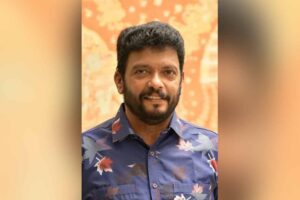This exhibition strived to elevate this art and paintings beyond the confines of forested areas, bringing them into the national spotlight.
Updated On – 03:31 PM, Sun – 5 November 23

This exhibition strived to elevate this art and paintings beyond the confines of forested areas, bringing them into the national spotlight.
New Delhi: President Droupadi Murmu inaugurated the art exhibition, Silent Conversation: From margins to the centre on Friday. The two-day exhibition displayed the power of art in giving voice to tribal artists from tiger reserves of India.
This is the first in a series of such exhibitions in different Indian cities and across the globe.
The primary objective is to establish a sustainable market for these artworks, thereby providing an alternative livelihood for these marginalized communities and bringing them into national cognizance. The event was organized by the Sankala Foundation in collaboration with the National Tiger Conservation Authority (NTCA).
Sankala Foundation is a Delhi-based policy and research organisation working in the field of climate change, and forest & wildlife conservation and committed to improving the lives of vulnerable communities.
In the heart of India’s forests, a silent conversation takes place. This exchange is imbued with gravitas and meaning that transcends time itself. It is a conversation that bridges the gap between tribal communities and wilderness, a whisper that has endured across centuries, expressed through the primitive medium of stone art to the modern canvas.
For ages, the tribal communities of India have coexisted symbiotically with nature and others who inhabit it. This coexistence finds expression, notably through their artwork and paintings.
This exhibition strived to elevate this art and paintings beyond the confines of forested areas, bringing them into the national spotlight.
The exbition aims at helping Tribal communities find fair value for their art thereby preserving a crucial part of their heritage and assiting the community in enhancing their income. This can then evolve as a sustained means of alternative livelihood.
Supported by the efforts of the Union Government there have been many initiatives aimed at the conservation of forests, wildlife, water bodies, and the environment, ultimately aiming to mitigate the adverse effects of climate change and a secure future for generations to come.
The exhibition put the spotlight on the intricate relationship between tribal communities residing near India’s tiger reserves and their deep-rooted connection with the forest and wildlife, all conveyed through the artwork.
These creations are not just mere paintings; they serve as reflections of age-old bonds and showcase unique art styles such as Gond, Bhil, Patachitra, Khovar and Sohrai, Warli, and many others. Numerous tribal artists were present at the event, providing visitors and art enthusiasts with an opportunity for direct interaction.
While a few leading names like Jangarh Singh Shyam, Bhuri Bai, Lado Bai, and Manu Chitrakar have become famous, the attempt was also on uncovering more hidden gems amongst the tribal artists.
Earlier, speaking at the inauguration ceremony, President Murmu said that today, 70 percent of the world’s tiger population is found in India and the communities living around Tiger Reserves and National Parks have an important contribution to this achievement.
She was happy to note that this exhibition showcased the relationship between the people living around the Tiger Reserves and the forests and wildlife through artefacts.
President said that in view of the serious problem of climate change, a holistic and collective effort is required.
“Not only for environmental protection but also for the existence of humanity, we have to adopt the life values of the tribal communities. We must learn from them how a prosperous and happy life is possible while living in harmony with nature,” the President said.
By offering the artworks for purchase, the exhibition encouraged visitors to support these artists and invest in unique, culturally significant pieces. This is aimed at increased appreciation and patronage of tribal art.
The event also helped spread awareness about tigers, forests, and tribal communities among schoolchildren and the public.





